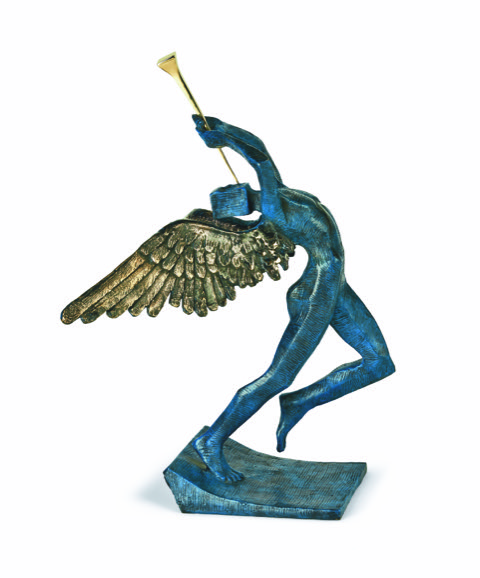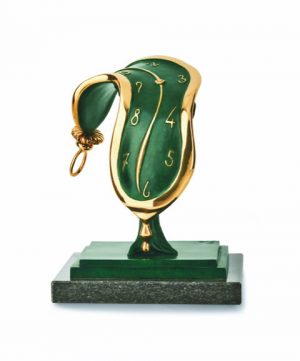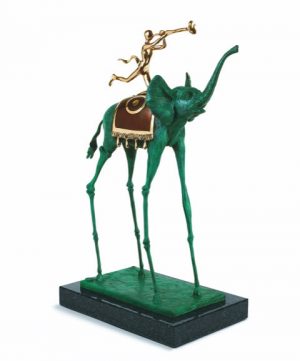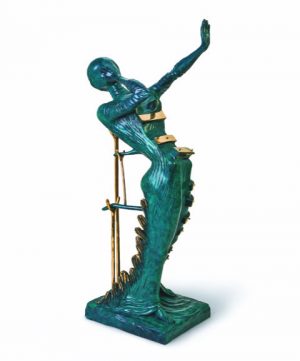Religious imagery fascinated and intrigued Dalí throughout his lifetime. For Dalí, angels expressed grace, nobility and lightness. Dalí once said “nothing is more stimulating than the idea of an angel!”. The face and trumpet in the sculpture, echo the Cubist style pioneered by Pablo Picasso, who Dalí admired. It is interesting that Cubism and Surrealism co-exist in this sculpture.
From the 1940s, when Dalí began weaving strong religious themes into his artworks, angels appear frequently in his oeuvre. Dalí rejected his family’s Catholicism early in life, only to re-embrace it again in later years. For Dalí, angels represented divine awareness, purity, protection and illumination. The key element of the sculpture is the trumpet, it links heaven and earth, bringing and reflecting divine light.
The angel’s wings are in perfect equilibrium, referencing Dalí’s obsession with geometrical precision. This sculpture embodies Dalí’s idea of heavenly achievement and aspiration.
Date: conceived in 1976, first cast in 1984
Material: bronze
Technique: lost wax process
Edition size : 350 + 35 EA
Height : 50 cm
Edition : patina blue
Maquette: original drawing, Triumphant Angel, 1976
Direct intervention (created by Dalí): the idea, image, and original maquette
Indirect intervention (created by artisans): lost wax process and patina






